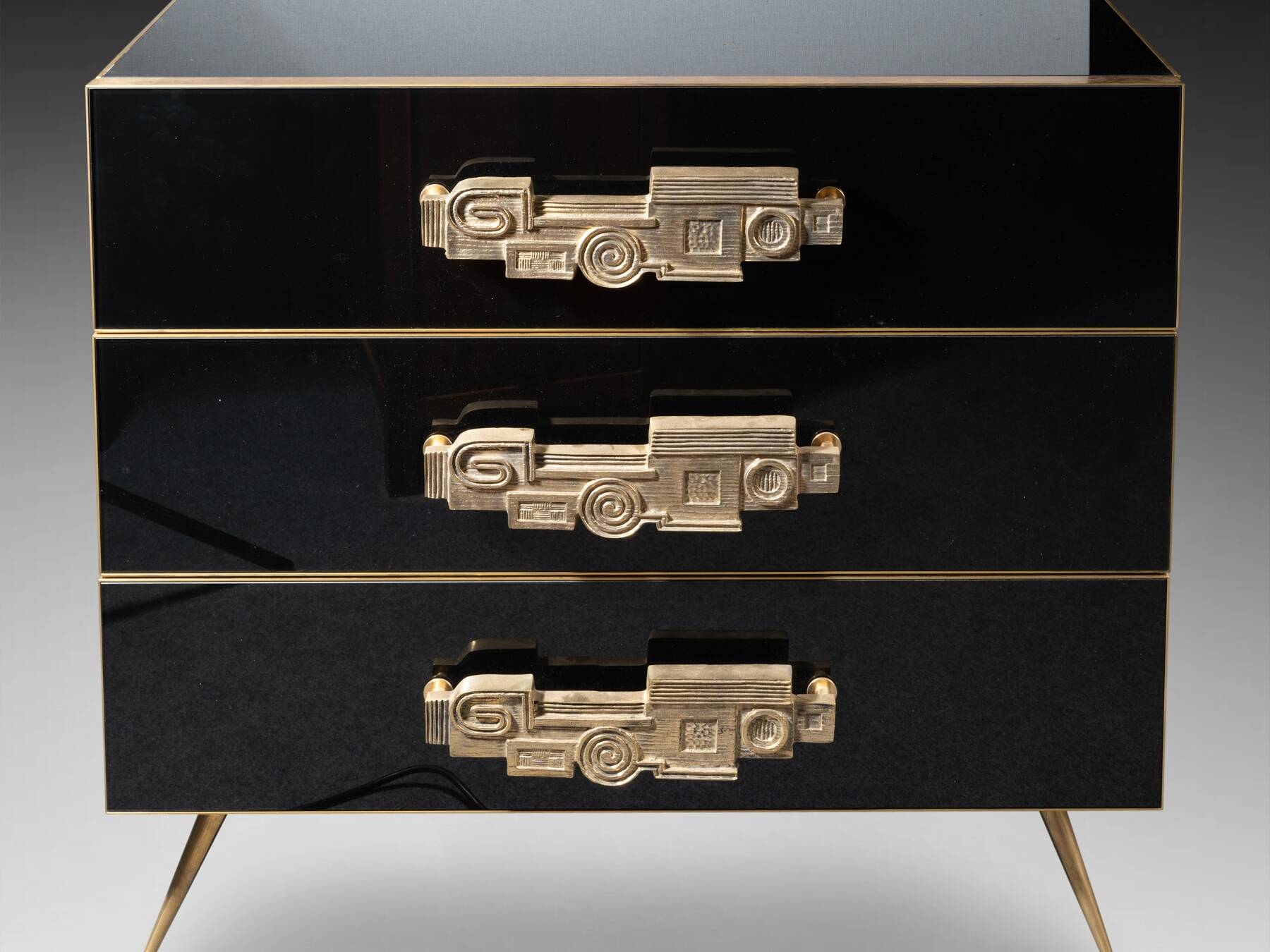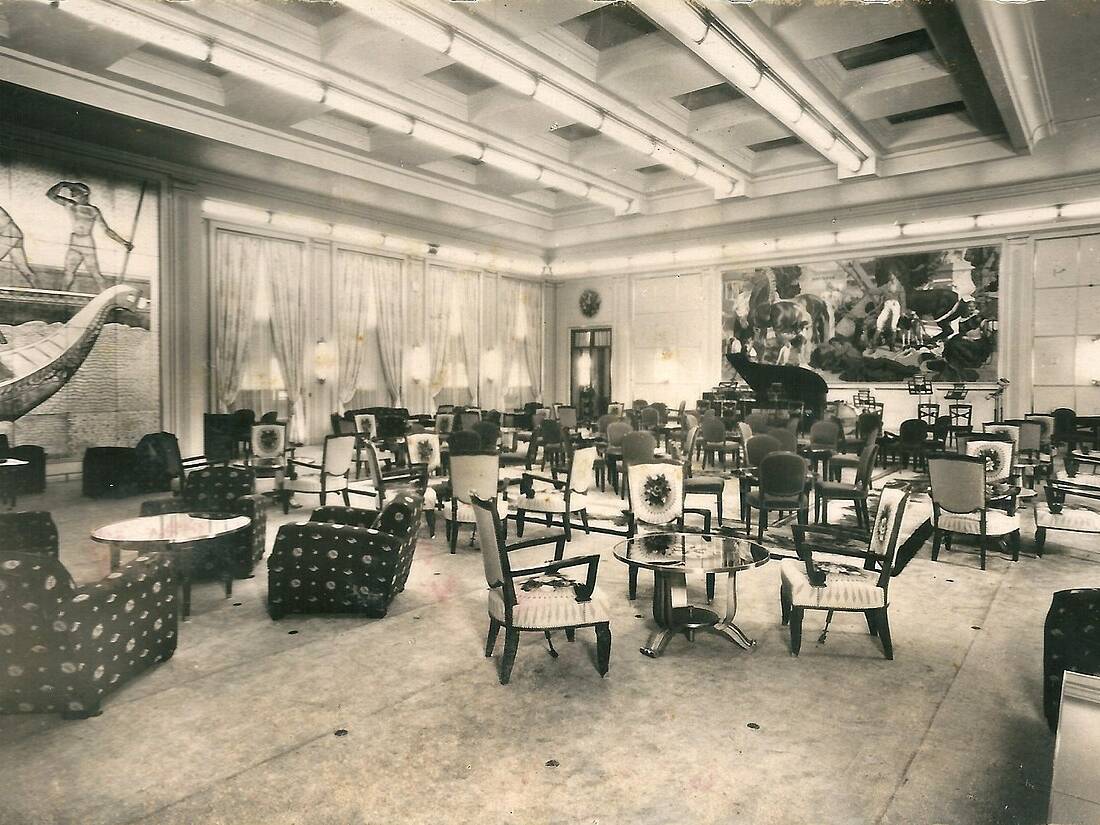In the 19th century, the taste was for historicism. Cabinetmakers and craftsmen take up the codes and great styles that marked previous centuries. From the Haute-Époque to the 18th century, art takes up the strong elements of each stylistic period and reuses them. Also, cabinetmakers demonstrate their talents and create superb pieces to meet this new demand in the most exact taste of the period or the artist they choose as a model.
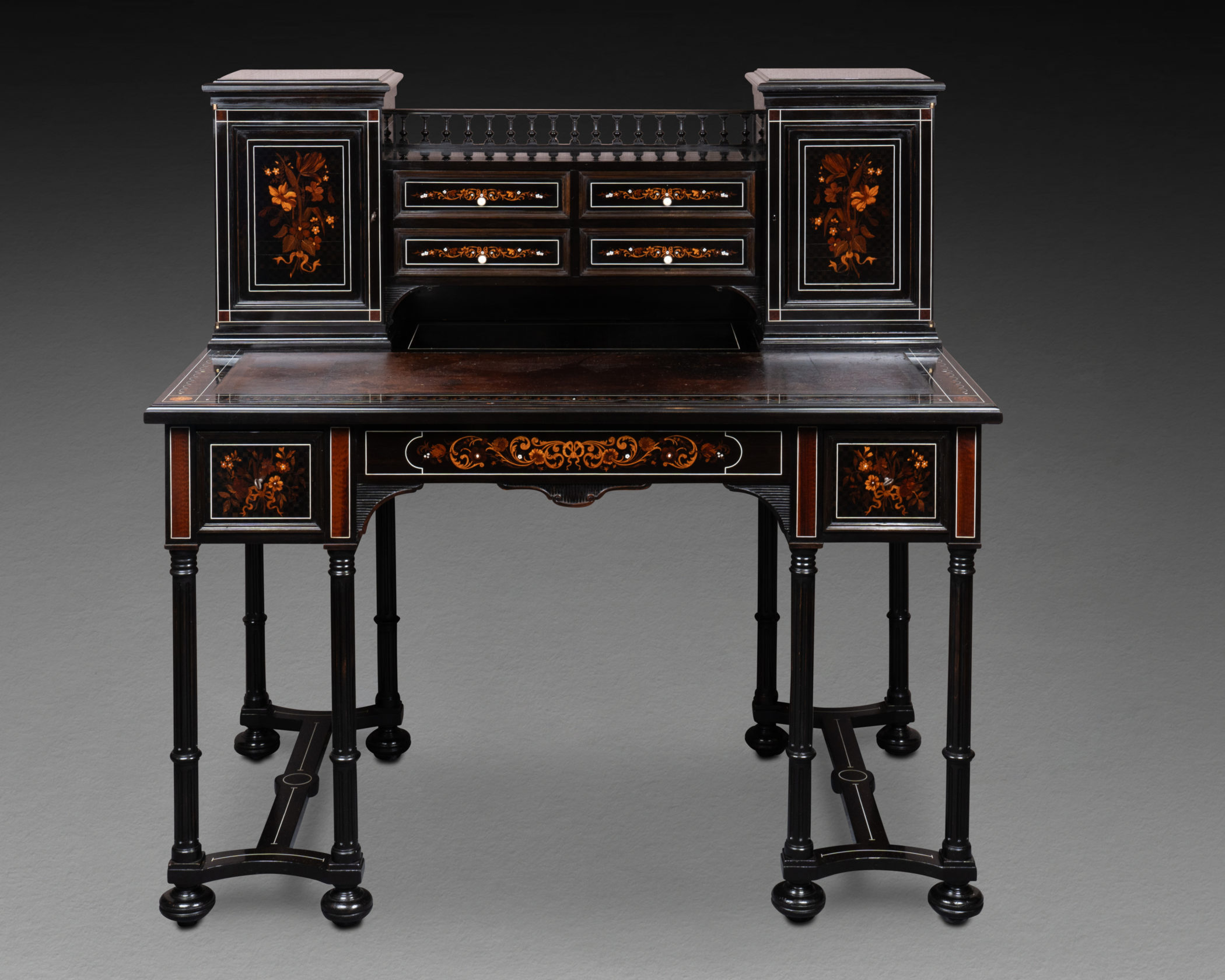
Clients from the upper middle class or high society know how to appreciate the talent displayed and demand more of this type of exercise. It is therefore quite natural that Charles Hunsinger (1823 – 1893) found success by offering his pieces in the style of those of Pierre Gole (1620 – 1684), a major cabinetmaker of the 17th century.
Hunsinger was born in Alsace and was active in Paris from 1859 where he was listed as a “manufacturer of luxury and fancy furniture” in the trade almanac. His mastery of marquetry and his remarkable knowledge of the Grand Siècle style allowed him to win the gold medal for Excellence in Craftsmanship at the Brussels Exhibition of 1881. Previously, he had presented his work at the Universal Exhibitions in Paris in 1865, 1867 and 1878. His talent and success were undoubtedly emulated among his colleagues.
Pierre Gole, the virtuoso master
Understanding the quality of this admirable work of 19th century cabinetmaking requires understanding the cabinetmaker from whom Hunsinger was inspired. Pierre Gole was one of the first cabinetmakers to serve the young Louis XIV. Blackened wood and ebony have been in fashion for several decades now.
Arriving in France in the 15th century, the use of ebony was reserved for small objects because its hardness made cutting difficult. It is then often substituted with blackened pear wood for veneers and marquetry. However, the cutting techniques of the 17th century improved and finally succeeded in properly slicing this superb exotic wood into thin slabs. However, this species remains a luxury product, reserved for an elite clientele, while less well-off sponsors always fall back on blackened wood.
At the same time, Henry IV initiated an emulation of French know-how from the very beginning of the 17th century by promulgating import bans (notably against Flanders tapestries) and authorized the arrival of Flemish and Dutch master cabinetmakers. Paris and other French cities soon found themselves enriched with foreign artisans and workers qualified in arts that the French mastered less well. The transmission of knowledge through the creation of workshops allows several generations to train and reach a new level of virtuosity.
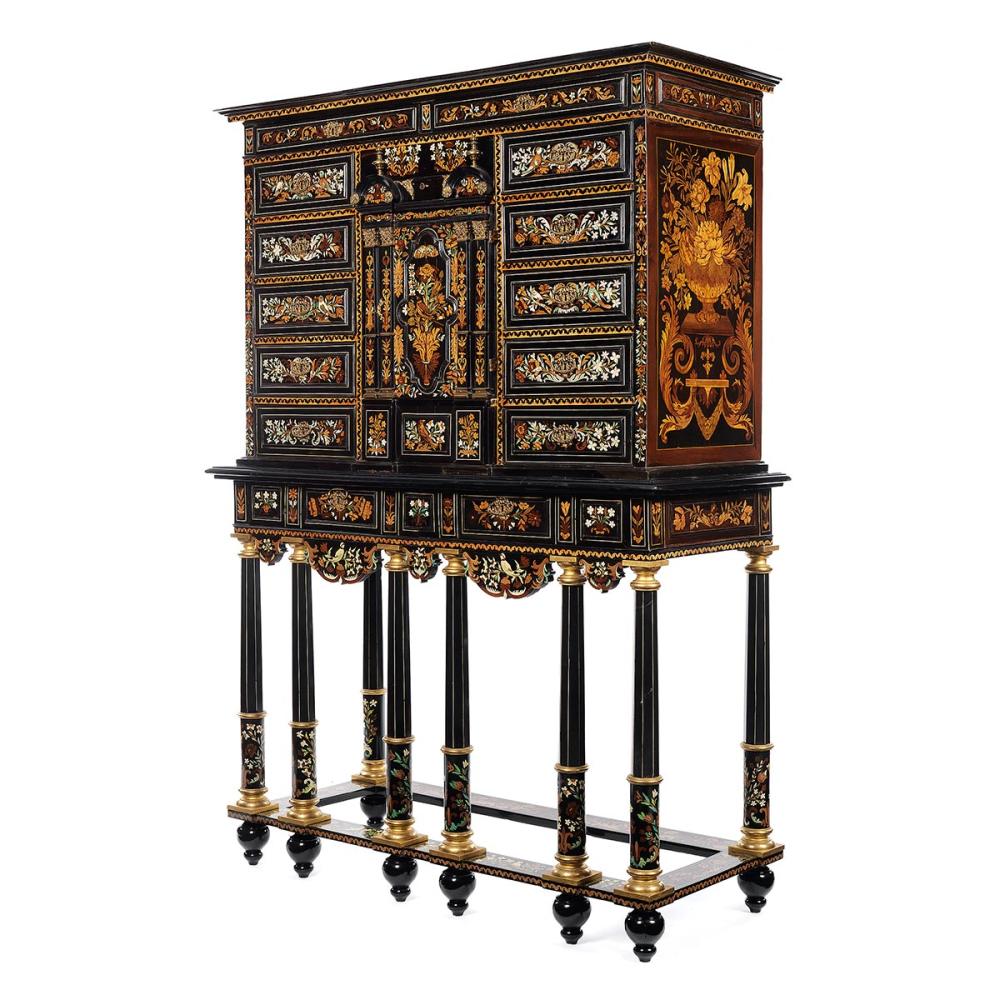
From the generation formed by these Flemish and Dutch artisans comes Pierre Gole (born in Holland around 1620, died in France in 1685). The future cabinetmaker apprenticed with Adriaan Garbrandt, a Dutchman and one of the most prominent cabinetmakers of his time. Gole married his master’s daughter and then succeeded the latter in 1650. A year later, he became cabinetmaker to King Louis XIV. He was then one of the great masters of ebony work and supplied both the royal family and wealthy individuals. However, when he entered the service of the crown, furniture inlaid with colored wood on a black background of ebony or blackened wood was fashionable and the elite wanted nothing else.
Flowery language
In the middle of the 17th century, the taste of the French Renaissance still infused the beginning of the reign of Louis XIV. The naturalistic study of flowers still evokes the inlaid, painted or sculpted specimens found in Blois or Fontainebleau. The flower vase is a common subject in Flanders and Holland, Protestant regions where art refuses to represent the sacred as do Catholic countries. The fervor then borrows from the allegory and vocabulary of nature and their numerous expressions are the occasion for learned parables. So, the symbolism of the flowers and that of the insects give the painted or inlaid work the dimension of a vanity.
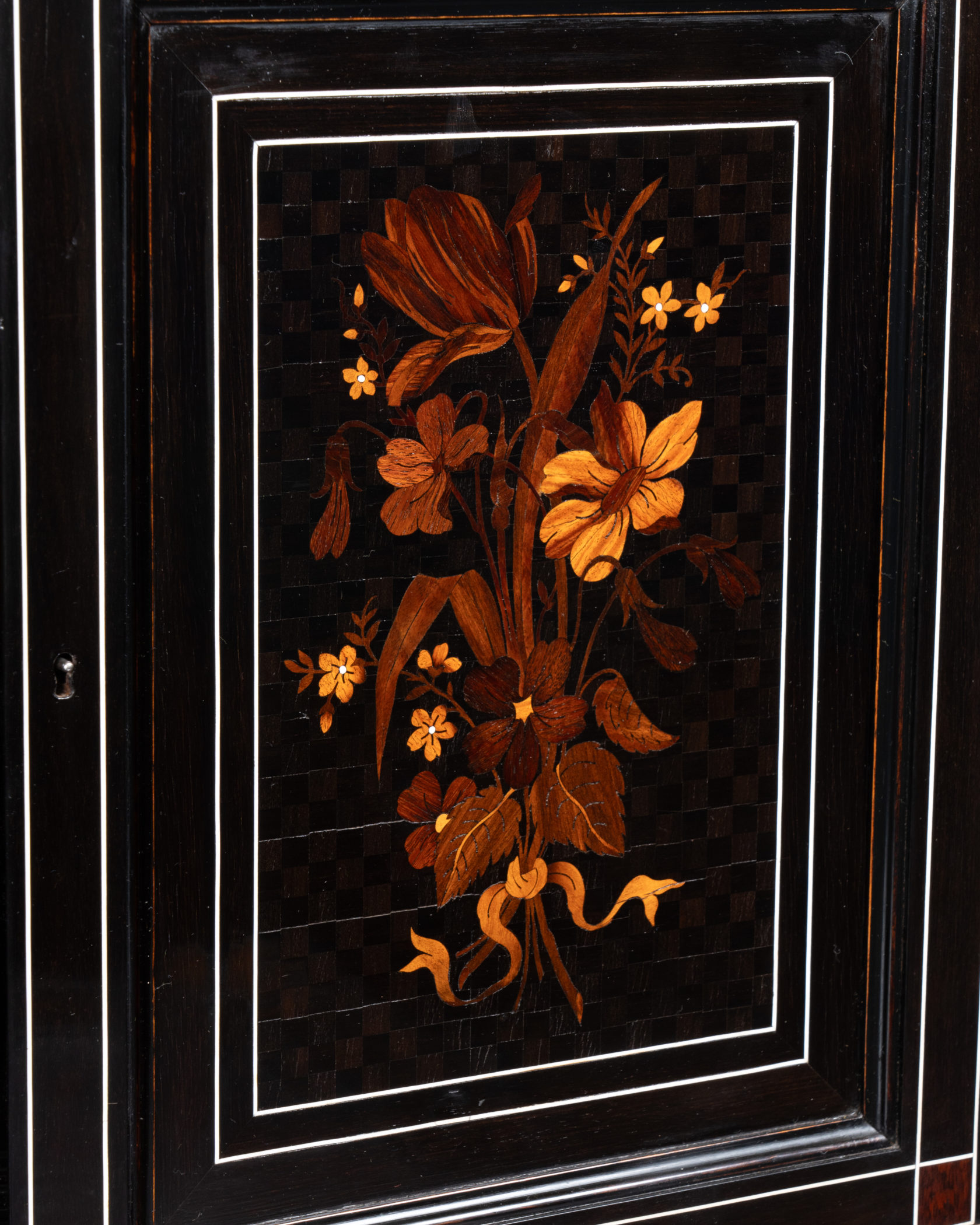
The technical mastery as well as the artistic atmosphere in which the Flemish and Dutch artisans evolved favored the introduction of these northern decorative themes into France, where they were somewhat adapted to satisfy French taste. The details are always refined, the palettes of essences subtle and the compositions perfectly balanced without deviating from this movement which pleases the French baroque.
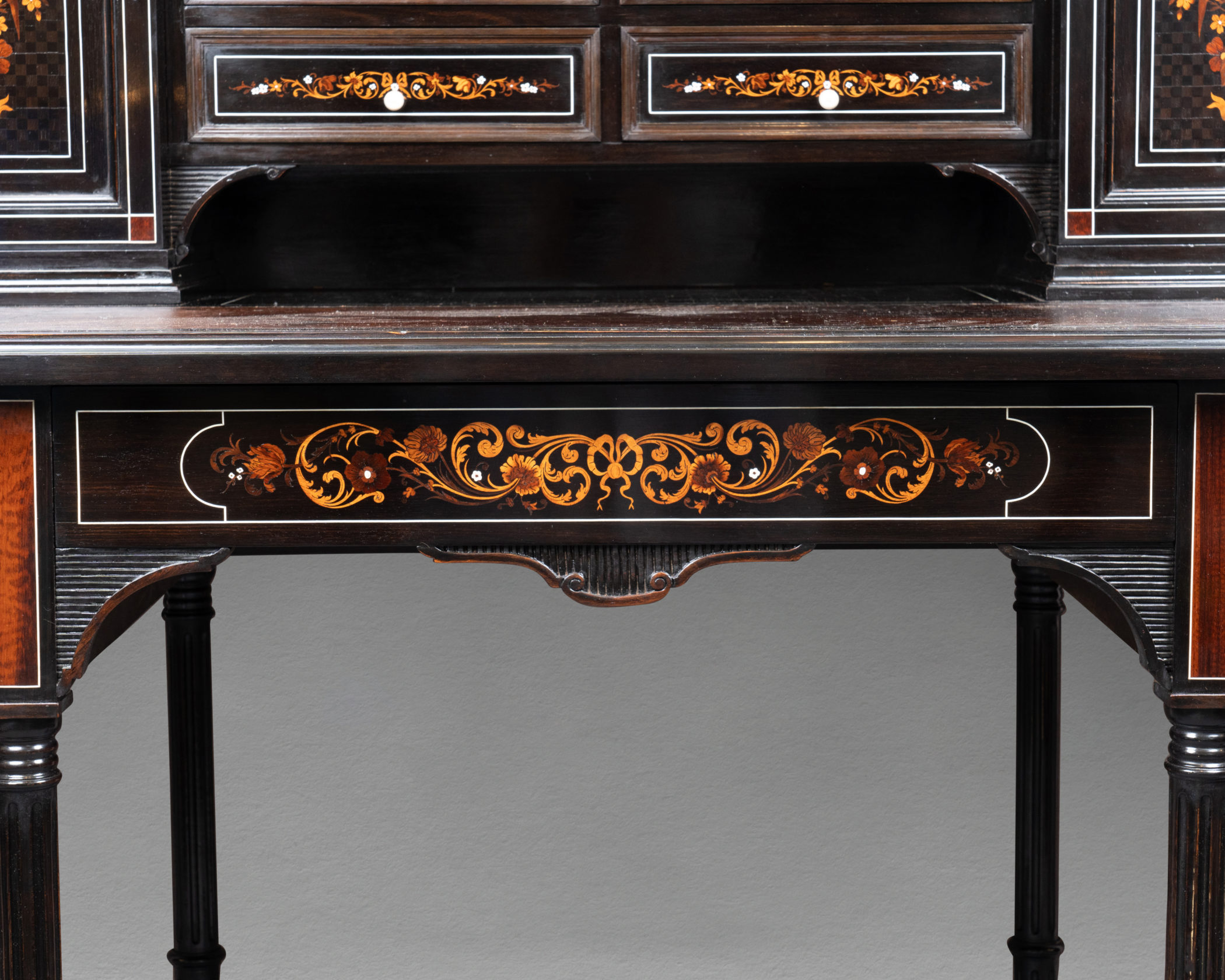
Hunsinger baroque
There are so many refined details that still amaze Charles Hunsinger’s contemporaries two centuries later. The latter, clearly taking to the game, found the full expression of his talent by working on the rebirth of the art of Pierre Gole.
Today, Charles Hunsinger’s pieces of inlaid furniture are still pieces of cabinetmaking worthy of admiration. Whether it is luxurious small pieces of furniture, desks, bonheur-du-jour or cabinets, the collector reads the erudition of this cabinetmaker, the technical and ornamental finesse, as well as the attention to the iconographic choice depending on the personality of the sponsor. While the 19th century was in full swing, it seems, thanks to Hunsinger, that the Grand Siècle never ended!
Marielle Brie de Lagerac
Art historian for the art market and cultural media.
Author of the blog Objets d’Art et d’Histoire
Autres ressources et documentations
28 June 2025
Plaster Sculptures, Plaster Casts
For a long time, plaster casts suffered from a poor reputation. Often regarded as crude replicas, and sometimes even dismissed as inexpensive imitations, they nonetheless had…
17 April 2025
The Middle-Ages Furniture
Rare and highly sought-after, Middle-Ages furniture is making a strong comeback. An overview of this market, where enlisting the guidance of a professional is strongly advisable.
18 March 2025
Murano Glass Furniture
Since the beginning of the 20th century, Murano glassmakers have been exploring new horizons. After classic lighting and decorative art, Murano glass is now used to adorn…
16 December 2024
A bronze triton after the sculptures of François Girardon (1628 – 1715) in Versailles
This fountain element is all the more admirable as it is sculpted after the masterpieces of the Pyramid Basin, on the parterre of the North Wing of the Versailles gardens.
18 November 2024
Tyco Bookcase, by Manfredo Massironi, for Nikol International
A pure creation of optical art research in the 1960s, the Tyco library shelf designed by Manfredo Massironi invites the viewer to bring the work of art to life on a daily basis.
3 August 2024
The Ocean Liner Style
In the 20th century, the immense ocean liners connecting the Old Continent and the New World were ambassadors of tastes and innovations on both sides of the Atlantic.



